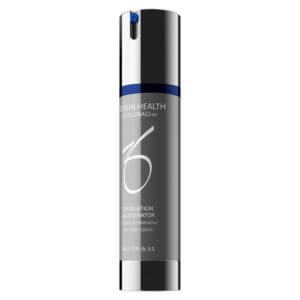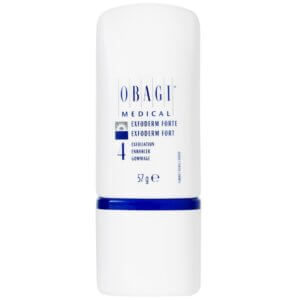Skincare acids are used to exfoliate skin and regenerate fresh cells.
These acids can be split into three main types: Alpha Hydroxy Acids (AHAs), Beta Hydroxy Acids (BHAs) and Polyhydroxy Acids (PHAs). Common hydroxy acids include Glycolic Acid, Lactic Acid and Salicylic Acid.
The idea of putting acid on your skin might sound like a scary thought at first, but AHAs, BHAs and PHAs are commonly found across a lot of popular skincare ranges.
One thing that AHAs, BHAs and PHAs all have in common is that they chemically exfoliate the surface layers of skin, removing dead skin cells to reveal more refreshed skin layers.
What do AHAs, BHAs and PHAs do for skin?
AHAs, BHAs and PHAs have a range of benefits for the skin. They have the power to reduce acne, minimise fine lines and reveal a healthy glow – all whilst delivering intense hydration.
Whilst AHAs, BHAs and PHAs are similar, there are some key differences to take note of depending on your skin type and skin concerns.
AHA (Alpha Hydroxy Acid)
AHAs (Alpha Hydroxy Acids) are found in some of the most commonly used chemical exfoliators. They work by breaking apart the molecules that bind dead skin cells in place.
AHAs can exfoliate the skin to different degrees depending on the product and concentration of acid, but most use gentle exfoliation to refresh the skin without irritating it.
AHAs dissolve skin cells on the uppermost surface of the skin. You’ll notice a slight tingling sensation when applying an AHA to your skin, which just means that the exfoliant is working.
AHAs work best when used regularly. With consistent use, AHA exfoliation increases the rate of cell turnover, encouraging the skin to naturally produce more collagen for a firmer appearance.
AHA benefits
The main benefits of AHAs are that they can help maintain a more youthful and even skin appearance.
By increasing cell turnover, AHAs can reduce wrinkles, improve uneven skin tone and control pigmentation. They can also help smoothen out scars and are good for sensitive skin due to their anti-inflammatory properties.
Types of AHA
- Glycolic acid – this AHA penetrates the skin deeply thanks to its smaller sized molecules. This allows the acid to target sun damaged layers of the skin and control pigmentation where sunspots and melasma have occurred.
- Lactic acid and malic acid – these milder AHAs are perfect for sensitive skin types. Lactic and malic acid AHAs contain larger molecules, meaning they cannot penetrate the skin’s layers as deeply.
- Mandelic acid – this AHA has been found to even out pigmentation, reduce fine lines and prevent acne. It is great for sensitive skin thanks to its anti-inflammatory effects.
Our top AHA picks
SkinCeuticals Glycolic 10 Renew Overnight

ZO Skin Health Exfoliation Accelerator

OBAGI Exfoderm Forte
BHA (Beta Hydroxy Acid)
Beta Hydroxy Acid (BHA) is ideal for acne-prone and oily skin types. There is only one kind of BHA – salicylic acid. This acid is well known for its anti-acne, anti-oil and anti-inflammatory abilities.
BHA is a lipophilic acid, which means it breaks down oils in the skin. BHA therefore not only exfoliates the surface layers of skin, but also helps clear sebaceous glands below the surface. When blocked, sebaceous glands are the site of acne, blackheads and whiteheads. So if acne and blocked pores are your concern, BHA may be perfect for you.
BHAs dissolve excess oil that has built up in the pores, without stripping the skin of its essential oils. This gives the skin a less dull appearance and can help maintain smaller pores.
BHA benefits
The main benefit of BHA, or salicylic acid, is that it can help clear the skin of acne, blemishes and blackheads. Its anti-inflammatory effects even help fade redness and marks from previous breakouts.
BHA is hailed as one of the most effective anti-acne ingredients in the skincare world, and if it isn’t part of your skincare routine already, it certainly should be.
As a lipophilic acid that dissolves oil, BHA can also help combat oily skin and encourage a smoother, mattified appearance. This makes BHAs perfect for targeting oily T-zones.
Our top BHA picks
SkinCeuticals Blemish + Age Defense

iS Clinical Active Serum

OBAGI Clenziderm M.D.
PHA (Poly Hydroxy Acid)
In skincare, PHAs are gentle acid exfoliators. They are perfect for sensitive skin since their molecules are much larger than AHAs and BHAs. This means that they can only target the most superficial layers of skin.
PHAs work in the same way as AHAs, by breaking down dead skin cells. Although PHAs do this much more gently as they don’t penetrate skin layers as deeply.
PHAs are gentle enough to use on eczema or rosacea and can have been shown to reduce redness caused by these conditions. These acids are also very effective at hydrating the skin, making them good for people with dry skin.
PHA benefits
The main benefit of PHAs is that they are great for people with sensitive and dry skin. For those who find AHAs or BHAs too strong for their skin, PHAs can provide a more suitable alternative.
PHAs do not disturb the more delicate layers of skin that lie beneath the surface, only focusing on the uppermost skin layers. This makes PHAs ideal for people looking for a chemical exfoliator that doesn’t irritate sensitive skin.
PHAs can be a great place to start if you are just beginning with a chemical exfoliator. Their gentle effects can ease the skin into an exfoliation routine, making it less likely to become irritated when introducing an AHA or BHA.
Types of PHA
Examples of PHAs include gluconolactone acid, lactobionic acid and galactose acid. Each is suitable for gentle chemical exfoliation. To get started with a PHA, look for these key ingredients in your next skincare products.
Our top PHA picks
NeoStrata Tri-Therapy Lifting Serum

OBAGI Intensive Daily Repair Exfoliating and Hydrating Lotion

NeoStrata Face Serum
Can I combine AHA, BHA and PHA acids?
Yes, you can combine AHA, BHA and PHA acids in your skincare routine. Some skincare products may even contain combinations of these different types of hydroxy acids. These are usually balanced at different levels of concentration.
If you are going to combine AHAs, BHAs and PHAs, it is advisable to rotate them throughout your routine. For instance, AHAs can be effectively combined with BHAs if you were to use one in the morning and one in the evening.
As an example, if you were to use a BHA in the morning, use the AHA at night. If your skin is sensitive, you might want to dilute acids with a gentle moisturizer.
Hydroxy acids and sun exposure
One thing to remember when using AHAs, BHAs and PHAs is to protect your skin from potential sun damage with a suitable SPF.
Acids can make your skin more sensitive to the sun’s UV rays. When the skin is unprotected, UV rays can cause skin damage. This means you should be more careful during the summer months when spending more time in the sun.
During sunnier months it is a good idea to use a higher SPF sunscreen, and only use AHAs, BHAs or PHAs in the evening when you are indoors.
Discover AHAs, BHAs and PHAs in our skincare range
At Dermastore, we have a huge selection of AHAs, BHAs and PHAs to level up your skincare regime. All hand-picked by dermatologists, our collection is expertly curated for the best results. Shop our chemical exfoliator collection.







